BICYCLE STUFF YOU NEED TO KNOW
Quick Release Skewers
What is a Quick Release skewer, and why do I need to know how to use them?
Almost every bicycle wheel is attached to the frame by a skewer. The skewer is inserted through the middle of the bicycle wheel and has some sort of mechanism to clamp down on the bicycle frame, ensuring that the wheel stays in place during normal riding.
In 1927, Tullio Campagnolo, a bicycle racer and later founder of the bicycle components company of his same name, invented a mechanism to hold the skewer in place called a Quick Release. The Quick Release allows for the skewer to be rapidly and conveniently removed or installed on the bike. The Quick Release does this through the use of a mechanism called a “cam.”
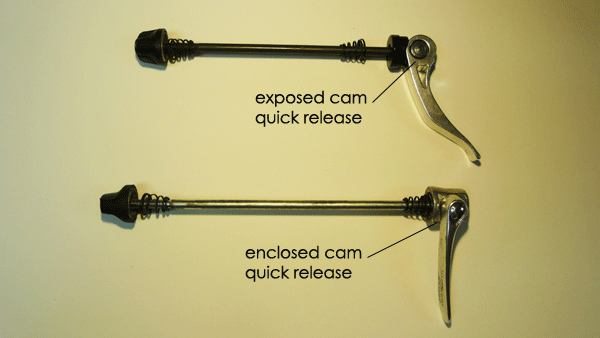
Most bike wheels today have Quick Releases on their skewers, and knowing how to properly use them is necessary for anyone who rides bikes regularly. An improperly used Quick Release may allow the wheel to slide out of place or even fall off during riding, but not to worry, for it is easy to learn how to use them safely.
How a Quick Release Works
A cam on a Quick Release is basically an circular piece of metal that rotates around an off-center axis. This off-center axis of rotation is important because as the circle rotates it will place different amounts of force on whatever it's pushing against. In the OPEN position, the cam's thinner side faces the bike frame, and the Quick Release is loose. When rotated CLOSED, the cam's wider side presses against the bike frame and applies enough inward clamping force to keep the wheel safely in place. Notice the thinner and thicker sides of the cam in the photos below.
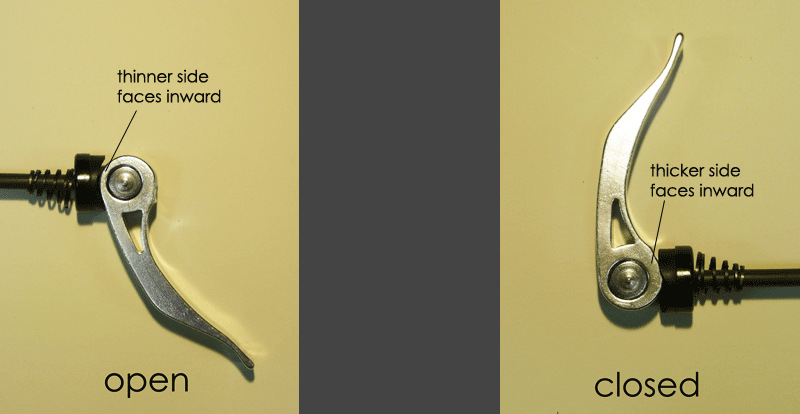
The lever of the Quick Release often has the words “Open” or “Closed” on written on either side, so simple by looking at the lever’s position one can tell whether the Quick Release is locked or not.
How to Properly Install a Quick Release
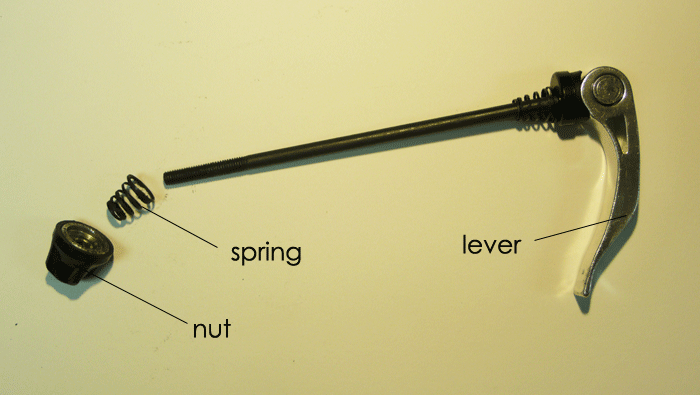
First, notice that the Quick Release skewer has an end with a lever and an end with a nut. Unscrew the nut from the skewer, then insert the skewer through the wheel’s axle. Screw the nut back on just a few turns. If there are springs, push one against each of the skewer ends.
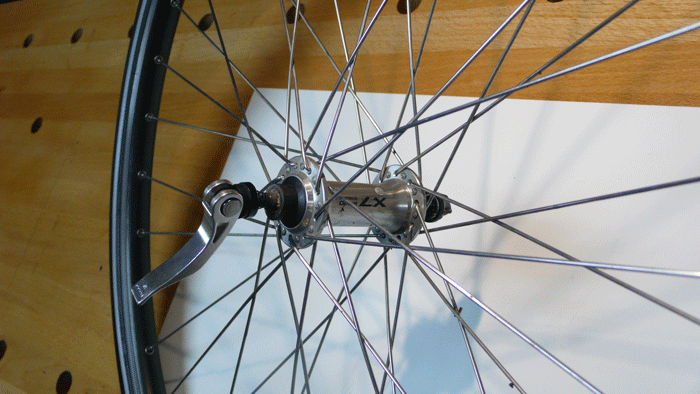
Place the wheel in the dropouts (if a rear wheel) or fork ends (if a front wheel) of the bicycle. The Quick Release lever should be in the open position, and on the non-drive side of the bike (the side without the crank). If there are springs, keep them pushed against the skewer ends as you slide the wheel into place.
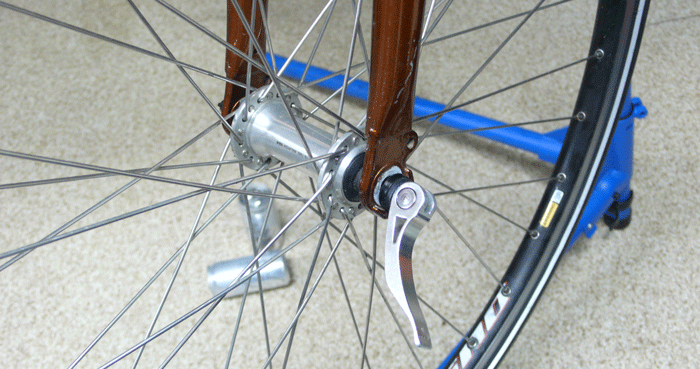
Now it’s time to get familiar with the actual Quick Release lever action. Once the wheel is in place, try closing the Quick Release lever. If the lever closes without any resistance and the wheel is loose, open the lever back up. Screw on the nut end of the skewer a little tighter, and then try closing the lever again. Repeat until the lever has enough resistance that you can see an imprint of it in the palm of your hand after you close it. If the nut end is screwed on too tight, then it will be impossible to close the lever, and the nut end should be unscrewed a couple turns.
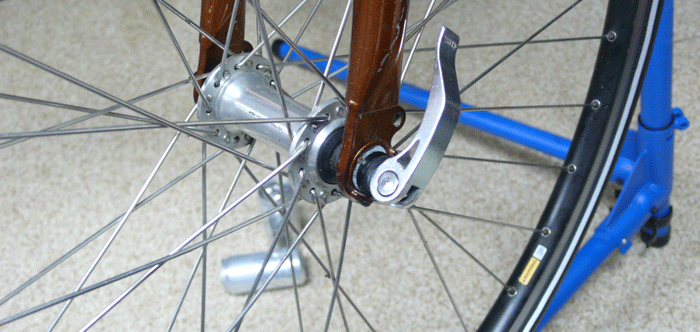
Once you think that the Quick Release is locked tight, bang on the top of the wheel a few times with the palm of your hand in a direction that would dislodge the wheel. It should stay firmly in place if the Quick Release is properly attached.
Removing a Quick Release is exactly the opposite of installing it – open the lever up, and if necessary, unscrew the nut end a few turns until the wheel can pop out.
